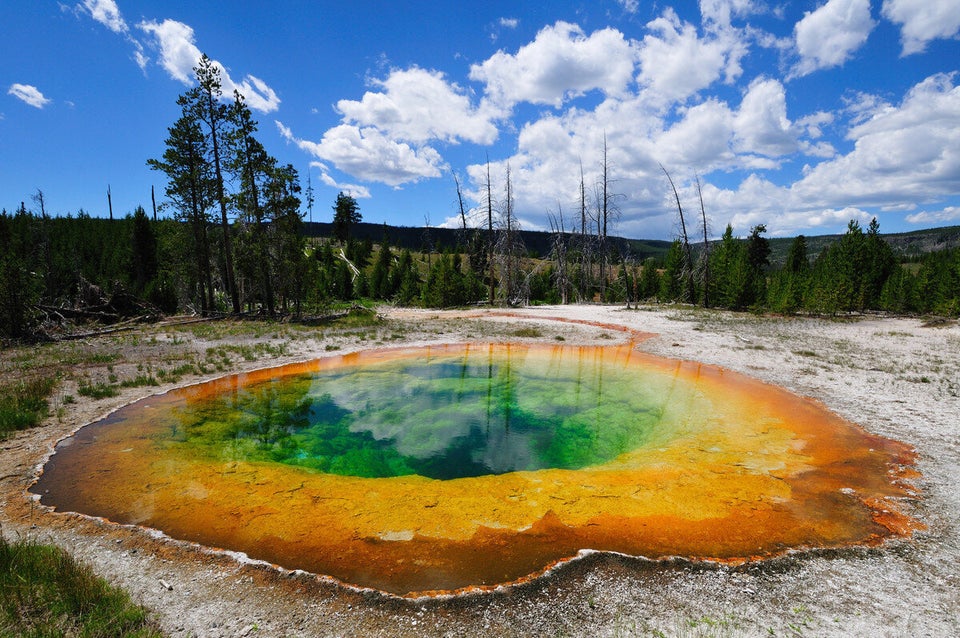In many areas of Canada, like Ontario, the levels of potentially pathogenic microbes can flourish and overwhelm our water treatment system leading to boil water orders or worse, outbreaks. These moments are thankfully rare thanks in part to the addition of a particular chemical, chlorine.
Chlorine is a known disinfectant and is the major killing agent in bleach. For decades, this chemical has been used to keep drinking water safe and is standard practice in many parts of Canada and the world. But it's not a perfect system and faces many hurdles. The most important of these is ensuring water is safe over the tens to hundreds of kilometres of pipes from the facility to the tap.
Although there may be enough chlorine in the system at the treatment plant, as the water moves further away, the concentration drops. If the levels get too low, bacteria may be able to resist the killing action and thrive. This could lead to unnecessary increases in bacteria and possibly the formation of microbial communities known as biofilms. When biofilms are present, they are protected from the effects of chlorine and may allow microbes including pathogens to assemble and grow. Although the likelihood of a gastrointestinal infection from these biofilms is low, the potential for other health issues may arise due to this lack of proper chlorination.
Last month, one American researcher explored the health implications of these resident bacteria. He found most species are harmless but several within these communities of biofilms may cause troubles, particularly to people suffering from health complications. He coined this collection of risky bugs Opportunistic Premise Plumbing Pathogens, or OPPPs.
Some of the names of these OPPPs are familiar to health professionals. One is Pseudomonas aeruginosa. It's implicated in both wound infections and also in respiratory complications associated with cystic fibrosis. Another is Acinetobacter baumannii. This particular bacterium has become a curse in many healthcare facilities and has led to not only outbreaks but also to the spread of antibiotic resistance. Then there is Legionella pneumophila. As the name implies, this is the cause of Legionnaires' disease, which causes a potentially lethal form of pneumonia.
Unfortunately, getting rid of OPPPs is not an easy task as most of them are generally resistance to chlorine. This means the simple option of adding more chlorine to the system will not be effective. Also, higher chlorine levels may result in the formation of potentially harmful chemicals collectively known as disinfection byproducts. This means a new direction is needed. As to which direction to take to improve the safety of drinking water, there are a few options.
The first is to reduce the levels of nutrients so the bacteria starve. Although we may not see particulate matter in the water we drink, there is a high amount of various chemical sources these bacteria can use as food. By reducing the amount of these molecules the bacteria will eventually drop in numbers. This requires a stronger filtration system at the plant and also requires more stringent testing to ensure the levels of nutrients are kept to a minimum.
Another possibility is to increase the heat of the water. All of the OPPPs are sensitive to high heat and will eventually die off over time. All that is needed is an increase in the temperature of the hot water and ensuring pipes are used regularly at these hotter temperatures. It's not an immediate option as the biofilms will take time to degrade but it will eventually lead to cleaner and healthier pipes.
There is a third and perhaps too ambitious option. This involves not removing but actually adding bacteria to the water. Several bacterial species can thrive in water and out-compete the OPPPs for space and nutrients. The entire environment becomes a safe ecology as a result of natural rather than chemical interventions. This concept, known as "probiotic" plumbing can be performed quite inexpensively and would have relatively good efficiency in reducing pathogen numbers.
However, there is a catch to using probiotics. Since many of these beneficial bugs are susceptible to chlorine, a re-think of the chemical in the water system would be needed. For this to occur, the entire water system principle would have to be re-examined. But as this may be the only way to deal with OPPPs in a cost-effective manner, it may be well worth the exercise.
All of these options are without a doubt for the future. Today we have an effective drinking water system that needs no alteration, as we move towards the future, there is value in reassessing how we keep our water safe. With an increasingly aging population and even more people suffering from immune suppression, the potential for more OPPPs related infections will rise. Although many sources are not directly linked to water, as the author points out, an indirect means to infection is quite probable. By taking the time to explore novel methods now, we may prevent unnecessary increases in these infections in the future and potentially avoid a possible crisis akin to that of the current concern with antibiotic resistance.
ALSO ON HUFFPOST:
